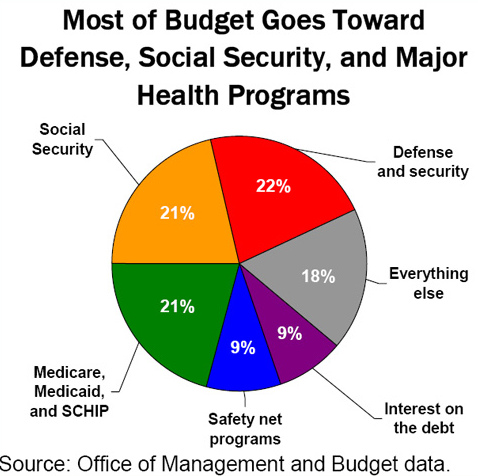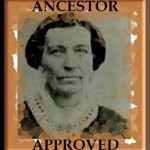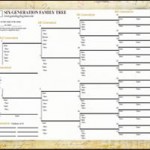My heritage: The Family Friendly Search Engine
April 19, 2010 by Chris
Filed under Articles, Genealogy Technology, Getting Started, Introduction to Genealogy
 Guest Post by Nick Capallero
Guest Post by Nick Capallero
Anyone involved in genealogical research knows about the difficulty in tracking long lost family members, in obtaining and organizing official records and placing them in an easy-to-use family tree for all the family. Although nowadays one can get help online, a good and trustworthy genealogy research tool, specializing in finding ancestors and advancing our family research, is essential.
Continue reading “My heritage: The Family Friendly Search Engine” »
US Social Security Office for Genealogy
January 26, 2010 by Chris
Filed under Articles, Genealogy Civil Records, Genealogy Records 101, Public Records
 Did you know that any United States citizen living in the US on or after 1936 is required by law to have obtained a Social Security Card. A Social Security Card is obtained by filing a Social Security Application. Social Security Applications are a part of the public record. The Social Security Application requires the applicant to state their mother’s and father’s full name. Very helpful to someone researching their family tree. To get access to these public records, you need to visit the Social Security Administration or a site that allows you to search their records.
Did you know that any United States citizen living in the US on or after 1936 is required by law to have obtained a Social Security Card. A Social Security Card is obtained by filing a Social Security Application. Social Security Applications are a part of the public record. The Social Security Application requires the applicant to state their mother’s and father’s full name. Very helpful to someone researching their family tree. To get access to these public records, you need to visit the Social Security Administration or a site that allows you to search their records.
You can search the records of the US Social Security Office from a number of sources. One popular source is at RootsWeb (which you can visit at the link below).
Three Steps to a Genealogy Family Renunion
January 24, 2010 by Chris
Filed under Articles, Family History, Genealogy for Beginners, Preserving Your Family Tree

Ever thought of throwing a Genealogy Family Reunion? We talk about how to organize and initiate such a reunion in The Step-by-Step Genealogy Guide. It isn’t that hard when you have a few basic tips.
First of all, plan the “reunion” around a pre-arranged family gathering (weddings are great.) This way you’ll have folks in town anyway. Ask the relative getting married if they’d mind if you had an informal gathering the afternoon after the wedding (maybe at a meeting room in the hotel.) I’m sure they wouldn’t mind.
Second, don’t do it all yourself. Get a committee organized to do the work, (we have a suggested agenda for the committee in The Guide.)
Third, plan out fun activities that will get people talking and organized around genealogy. For example, ask them to bring old pictures, photo albums, or copies of the three key documents we talked about yesterday.
Family reunions are a great opportunity to complete some solid research. Go with some key questions in mind and you’re bound to make progress.
Wondering How To Make A Family Tree – It Boils Down To Just Three Core Documents Your Searching For!
January 8, 2010 by Chris
Filed under Articles, Getting Started in Genealogy, Introduction to Genealogy, Lesson 4 Articles, Public Records
I receiv e great feedback every day by email. I wish more people would use the comments form below to share their experience. Please don’t hesitate to do so yourself. Regardless, keep the questions coming. I wanted to write right away and respond to everyone with the answer to a great question I received. One beginner genealogist wrote, “All this about government resources and talking to your family is great but it’s still not clear what I’m looking for.”
e great feedback every day by email. I wish more people would use the comments form below to share their experience. Please don’t hesitate to do so yourself. Regardless, keep the questions coming. I wanted to write right away and respond to everyone with the answer to a great question I received. One beginner genealogist wrote, “All this about government resources and talking to your family is great but it’s still not clear what I’m looking for.”
Has this same question crossed your mind?
Here’s the bottom line. You want to trace your ancestors back as far as you can. By that I mean identifying your direct ancestors (your parents, your grandparents, your great-great grandparents, etc.). Brothers and sisters, Aunts and Uncles, they are all great people to keep notes on but your core family tree is just the parents of the parents of the parents of you (and beyond).
When you find a direct mother or father in your lineage, you need to have documentation that proves that they are a part of your lineage You do this with formal documentation. Namely, birth certificates, marriage certificates, and death certificates. You’re ultimately searching for these three documents for every person on your family tree. This is how you do a family tree.
These documents will provide you with the critical information you need to go back to the previous generation. For example, a birth certificate will tell you who the parents were.
Does that help? Stick with it… you’re doing great. Just take it one generation at a time.
How To Do A Family Tree – 4 Critical Public Resources
December 9, 2009 by Chris
Filed under Articles, Getting Started in Genealogy, Introduction to Genealogy, Lesson 2 Articles, Public Records
 I thought it would be helpful to review the public resources available to you when trying to figure out how to do a family tree. We cover each of these in detail in The Genealogy Guide so I won’t go overboard here. Sometimes knowing the list of resources available is half the battle.
I thought it would be helpful to review the public resources available to you when trying to figure out how to do a family tree. We cover each of these in detail in The Genealogy Guide so I won’t go overboard here. Sometimes knowing the list of resources available is half the battle.
How To Do A Family Tree – Four Must Know Resources
- First of all, you need to know that much of the Social Security database can be accessed as a part of public record in the United States. This is a great place to start
- Other Government resources include the Office for Vital Records and the Department of Veteran Affairs
- Don’t overlook your local courthouse or other public records like those kept by the Knights of Columbus
- Finally, local records from the main ports of call in the US are a great source for immigration records
This is just the basics. What do you think? Am I missing a fundamental public resource? Use the comments area below to add your favorite basic public source for genealogy record hunting.
What To Ask The Crypt Keeper – Genealogy Research at Graveyards
November 7, 2009 by Chris
Filed under Articles, Cemetery Searches, Genealogy Cemetery Searches, Genealogy Records 101
 Some people have asked me about gravestone photos. We received a couple of emails on that, so I thought it would be helpful to write a little about the role of graveyards in your genealogy research. They are critical! As you get your hands on death certificates or even learn more about where your ancestors lived, you’ll be able to consult the local graveyards to find information on spouses, birth dates, and other family members. Keep in mind that in many cases, families are buried together (sometimes for several generations). This was truer for our ancestors than it is for us today. People didn’t travel as they do today.
Some people have asked me about gravestone photos. We received a couple of emails on that, so I thought it would be helpful to write a little about the role of graveyards in your genealogy research. They are critical! As you get your hands on death certificates or even learn more about where your ancestors lived, you’ll be able to consult the local graveyards to find information on spouses, birth dates, and other family members. Keep in mind that in many cases, families are buried together (sometimes for several generations). This was truer for our ancestors than it is for us today. People didn’t travel as they do today.
Our past generations tended to live in the same area. This makes graveyards a great resource. Also remember that many graveyards are denomination specific. Don’t waste time looking for a Catholic ancestor in a Protestant graveyard.
Family Tree Research – The First Steps
November 7, 2009 by Chris
Filed under Articles, Genealogy for Beginners
 Some folks are asking about family tree research and if we could offer some ideas/assistance with how to actually find your ancestors. We’ll spread the ideas out over several posts so you can digest things in small chunks (at least my mind works that way).
Some folks are asking about family tree research and if we could offer some ideas/assistance with how to actually find your ancestors. We’ll spread the ideas out over several posts so you can digest things in small chunks (at least my mind works that way).
That said, I’m going to assume …
- You have a family tree template and understand how to fill out a family tree.
- You’ve got the passion to create a family tree that will make you and your family proud.
- You’re having a little trouble researching your family history.
- Your biggest challenge…? I’m going to assume you simply don’t know where to start.
The first step is to organize your paperwork. Some people like to get a special notebook or pen for notes. Something to make it special. With this in place, you need to write down everything you know about your family. But focus just on you, your parents, and their parents. This “family brainstorming” will be critical to help guide your initial research. (More on this later.) The initial research starts with your living parents and grand-parents. Getting information from them and, more importantly, getting permission to rummage around their attics. These will be your first (and best) research resource.
Here is what you’re looking for… the full name, birth date, marriage date, and date of their death.
Check future posts on where to go from here.
Making Family Trees – Tackling The 6-Generation Family Tree Chart
November 7, 2009 by Chris
Filed under Articles, Genealogy for Beginners, Genealogy Reports and Charts, Introduction to Genealogy
 When making family trees it’s easy to get lost in the details. All those lines and dates, who’s generation one and where do your children go? My hope is that this blog post will get a discussion going around how to address these issues.The Six Generation Family Tree Template you downloaded has three key areas that you need to understand in order to complete your family tree:
When making family trees it’s easy to get lost in the details. All those lines and dates, who’s generation one and where do your children go? My hope is that this blog post will get a discussion going around how to address these issues.The Six Generation Family Tree Template you downloaded has three key areas that you need to understand in order to complete your family tree:
- Entry Numbers (representing people)
- Chart Number (used to sync 7+ generations)
- Birth, Married, and Death citations (represents your research)
Some folks are writing to say they’re having a hard time with these three areas. If this is the case for you than go ahead and use the comments area below to ask any specific questions. Also note that I’ve written a short yet detailed guide that you can use to complete your family tree chart.
It has four main sections:
- Mastering the Six-Generation Family Tree Chart
- Step-by-Step: Generations One Through Three
- Step-by-Step: Generations Four Through Six
- Seven Generations and Beyond
I’m calling it, “How to Complete a Family Tree Chart” and you’ll find it a great resource for getting things done.
It is extremely inexpensive and packed with photos and step-by-step instructions. I discuss every inch of the 6-generation family tree and promise it’ll answer every question you have about how to complete the chart.
(If there is a question or comment below that you have a good answer for, please don’t hesitate to chime in.)
Making a Family Tree – The Challenges of Beginning Genealogists
November 7, 2009 by Chris
Filed under Articles, Genealogy for Beginners, Getting Started in Genealogy, Introduction to Genealogy
 We did a survey a little while back where I asked the original visitors to this website what their biggest challenge was when making a family tree. The idea was to make sure the website was a resource that would help people overcome these initial barriers.
We did a survey a little while back where I asked the original visitors to this website what their biggest challenge was when making a family tree. The idea was to make sure the website was a resource that would help people overcome these initial barriers.
This is what people said was their hassle.
- Trying to figure out how to complete a formal family tree chart (like the one you downloaded)
- There was confusion on whether or not cousins should be on your tree
- Some folks had a terrible time understanding how to obtain birth, marriage, and death certificates (and when or why they were important).
- Surnames (especially when immigrating relatives changed the spelling) were a problem.
We actually received 182 different responses, but these were some of the more popular ones. We built this site around the results of that survey, and developed the tools you’ll find on this site around solving these problems. How are things going with you? Are you finding that any of these relate to what you’re experiencing? Use the comments area below to post your biggest genealogy challenge.
I’ll answer what I can. Please feel free to comment as well if you know an answer or resource that might help.
How to Make a Better Family Tree
June 4, 2009 by Chris
Filed under Articles, Blank Family Tree, Genealogy Research Resources, Making genealogy Connections; Reaching out
 Many families take great pride in their ancestry; maintaining and preserving their family history in great detail. For countless others, knowing their origins determines for them, to a great degree, how they see themselves today. When you first set out on this journey and begin to learn just how much time and effort are required to study your family’s roots it can be a little daunting. For this reason some people may shy away from this rewarding pass time thinking it too difficult.
Many families take great pride in their ancestry; maintaining and preserving their family history in great detail. For countless others, knowing their origins determines for them, to a great degree, how they see themselves today. When you first set out on this journey and begin to learn just how much time and effort are required to study your family’s roots it can be a little daunting. For this reason some people may shy away from this rewarding pass time thinking it too difficult.
That is simply because they do not yet know that there are many people in the world of genealogy only too happy to reach out and lend a hand to beginners.
People as resources
One of the best things about taking on the task of researching your family tree are the people you will meet along the way, those who share your passion for genealogy. People who can help point you towards great resources or who will take the time to give a little advice when you are stuck at the dreaded brick wall and are just not sure where to look next. Persons who can help you get off to the best possible start by taking the time to introduce you to the many tools that will make your research easier.
Making a better family tree is not always about finding those important names, dates and places or about filling in as many blanks as possible. You will discover that as you as you add the branches, it is the friends you make along the way that put the blossoms on your tree.
Great resources available here: Free Blank Family Tree Template.
